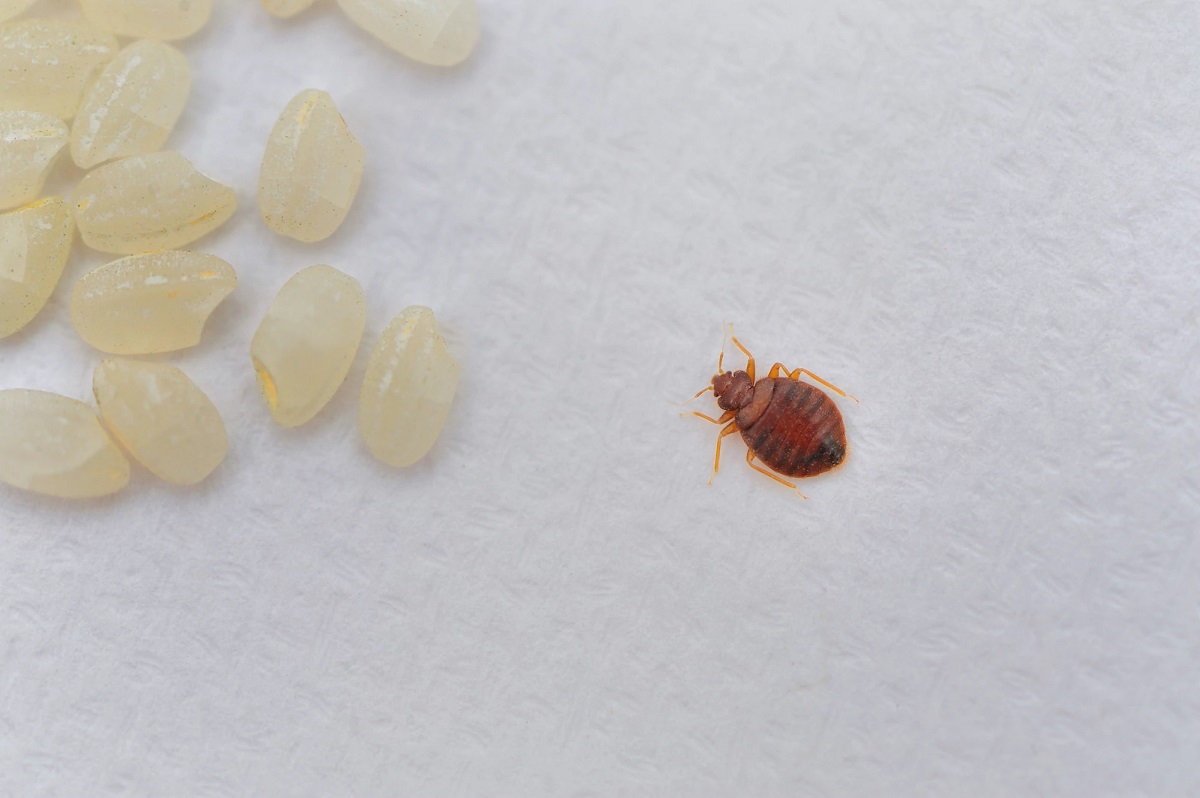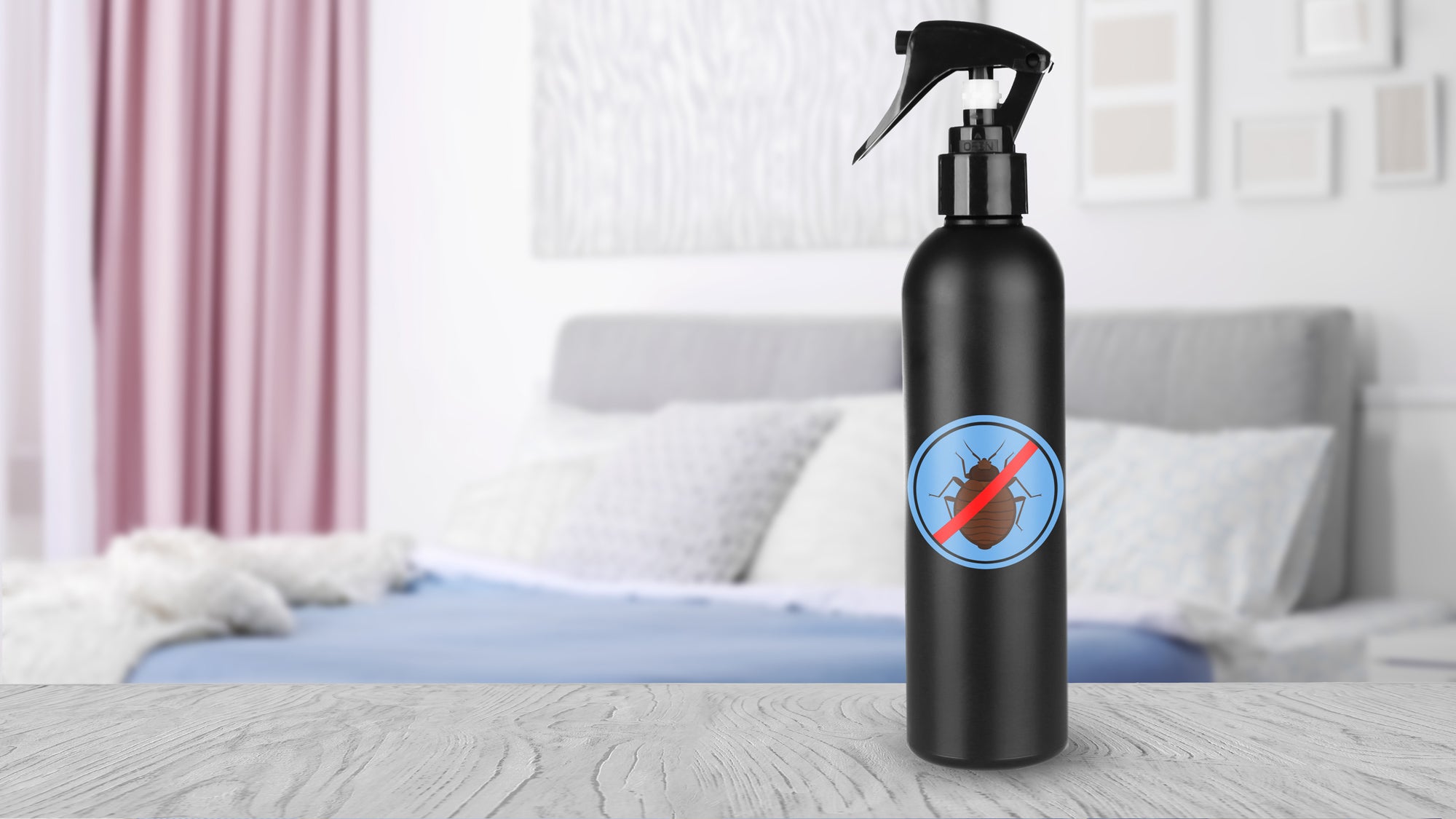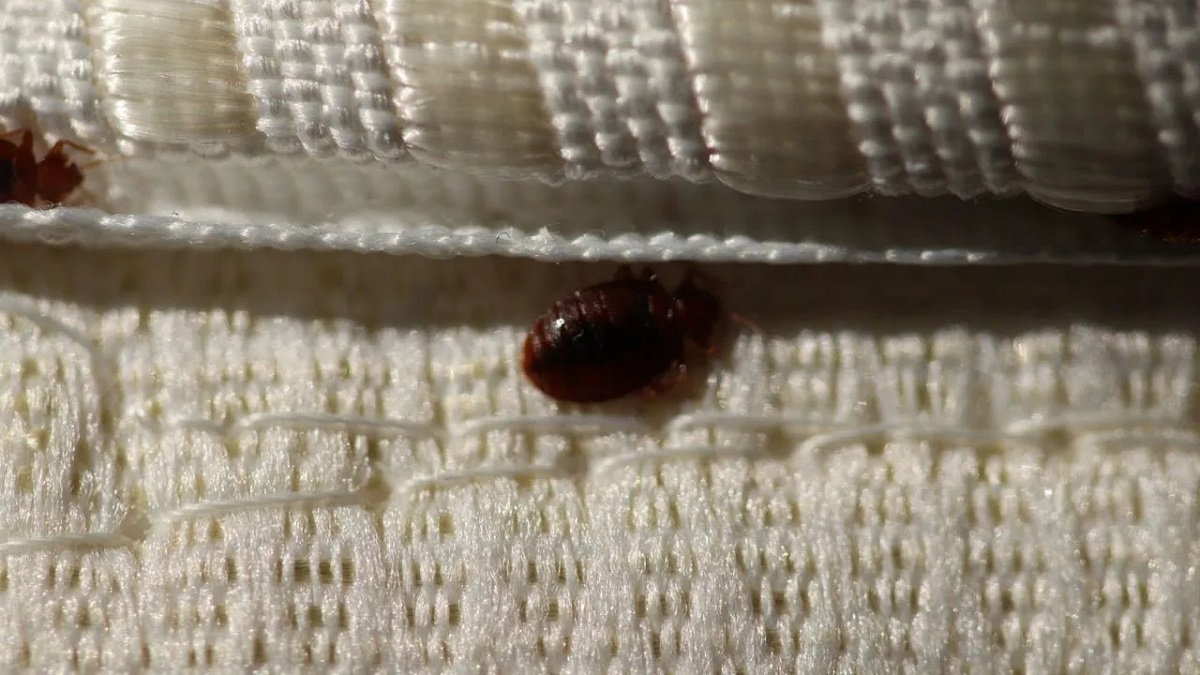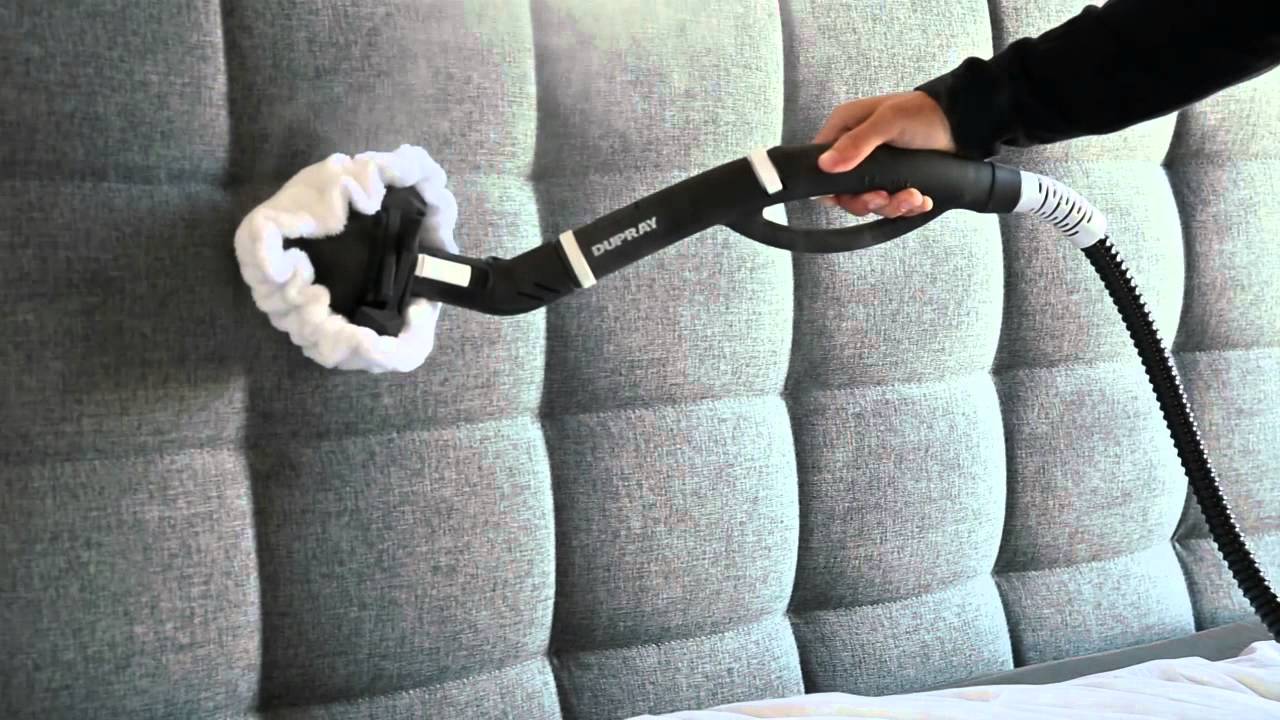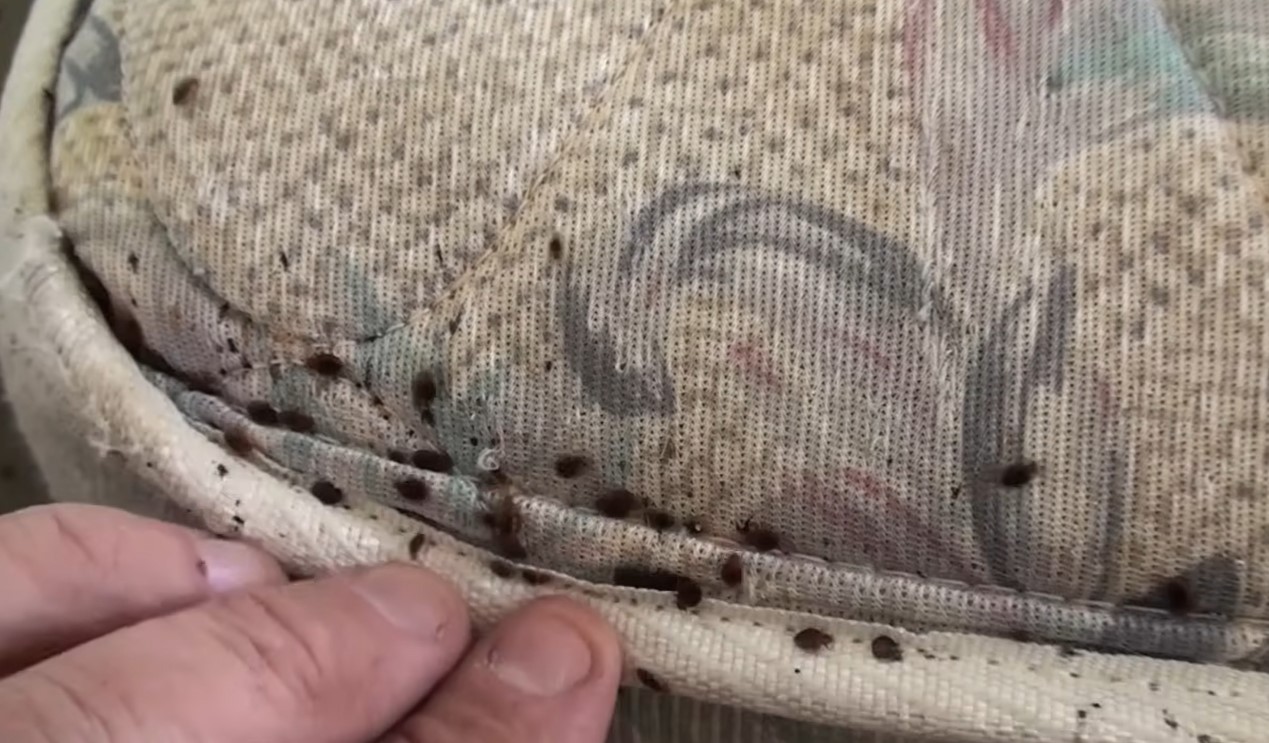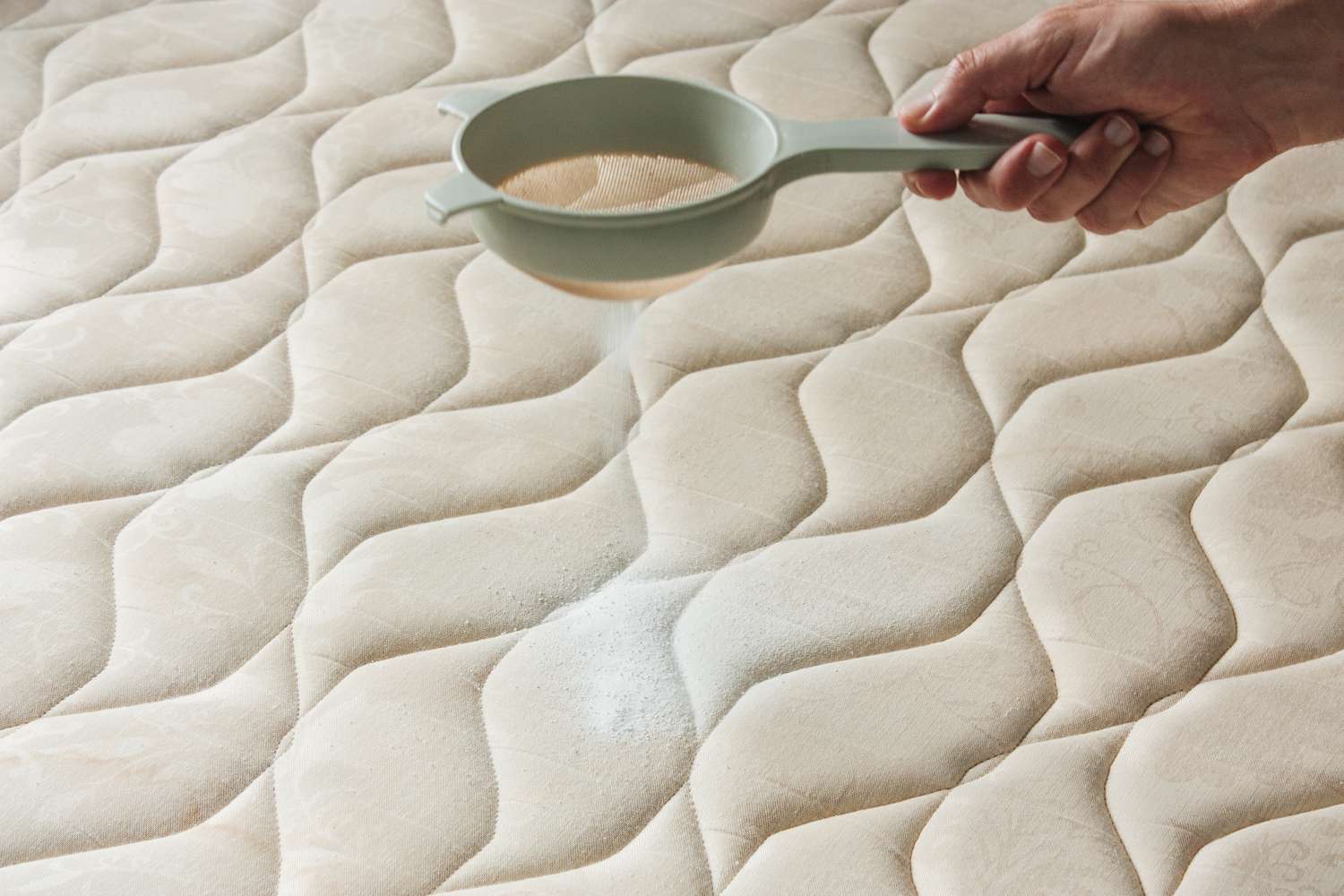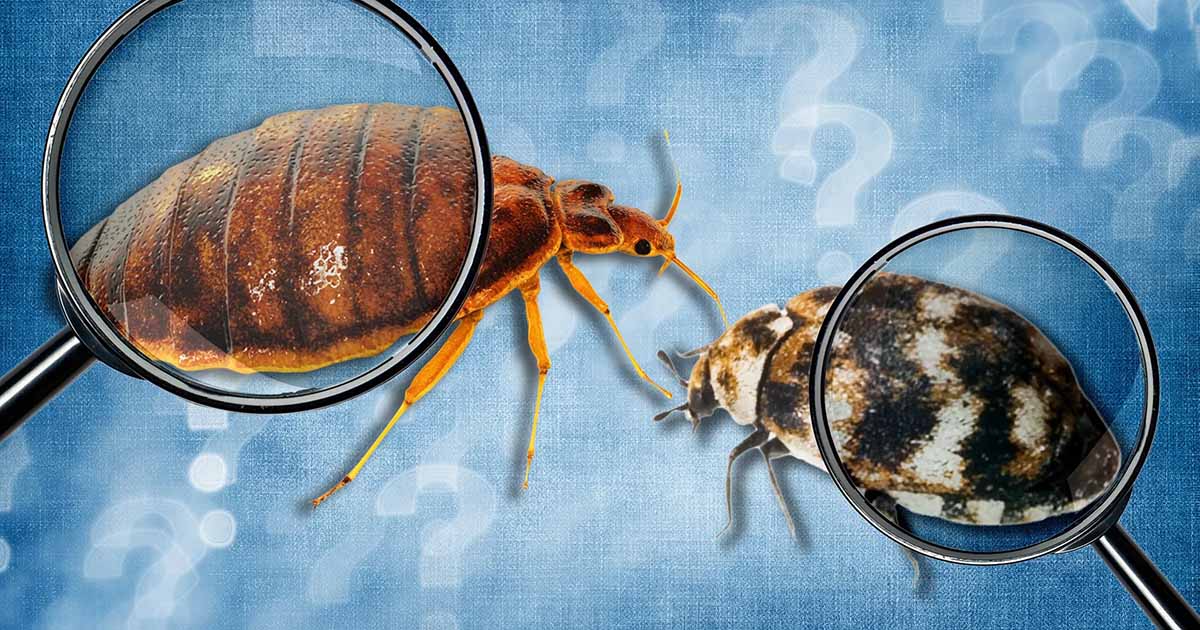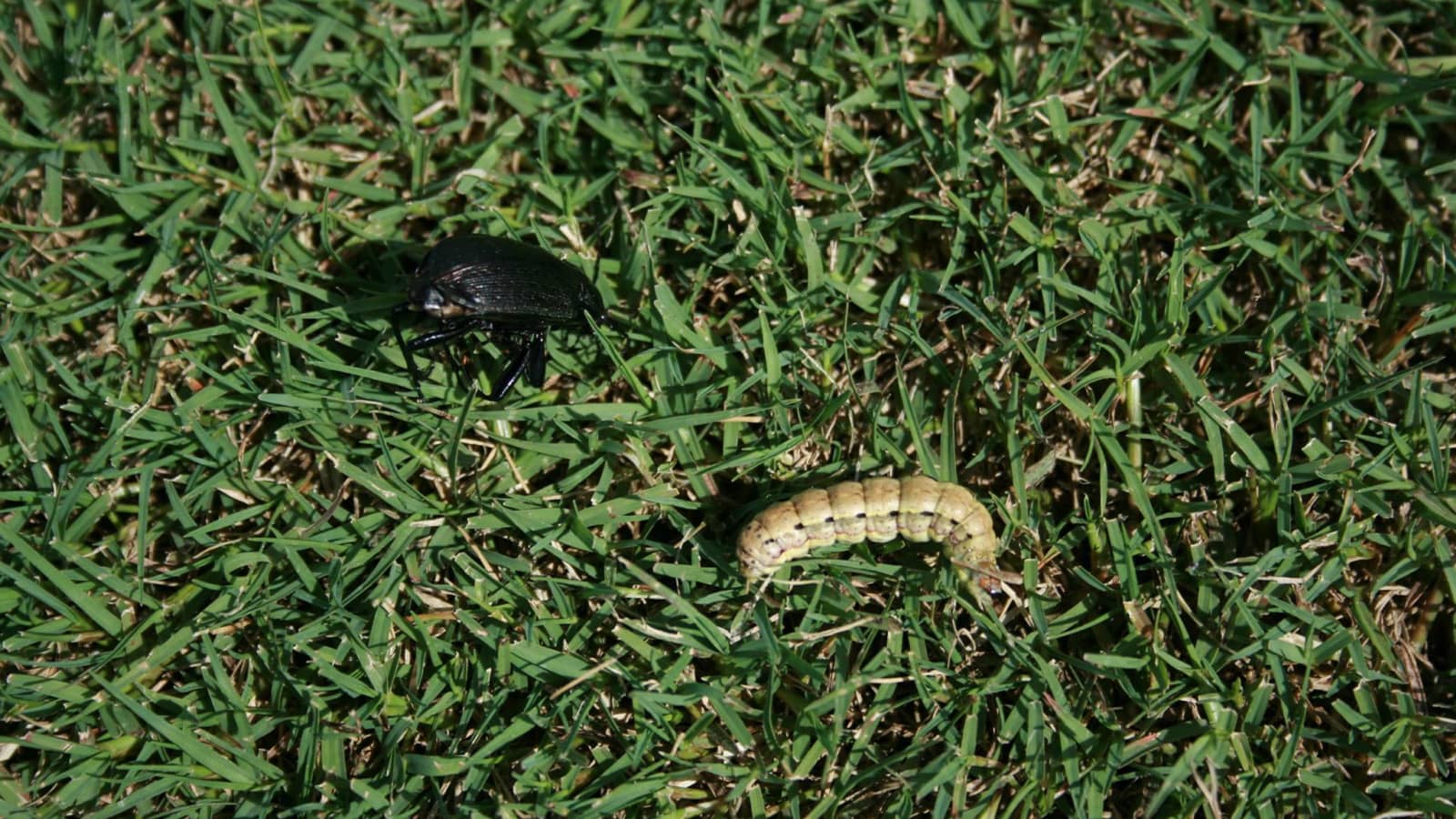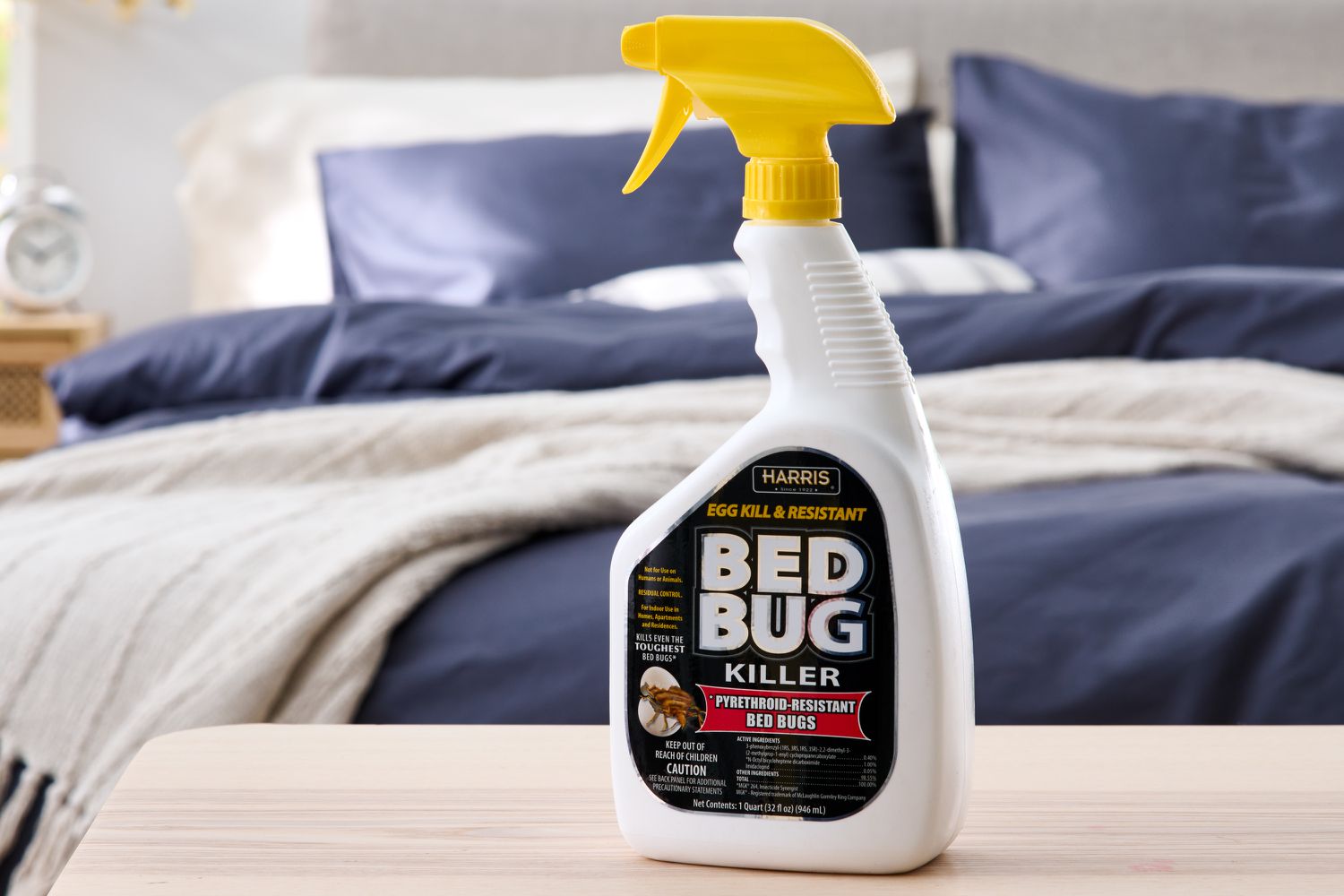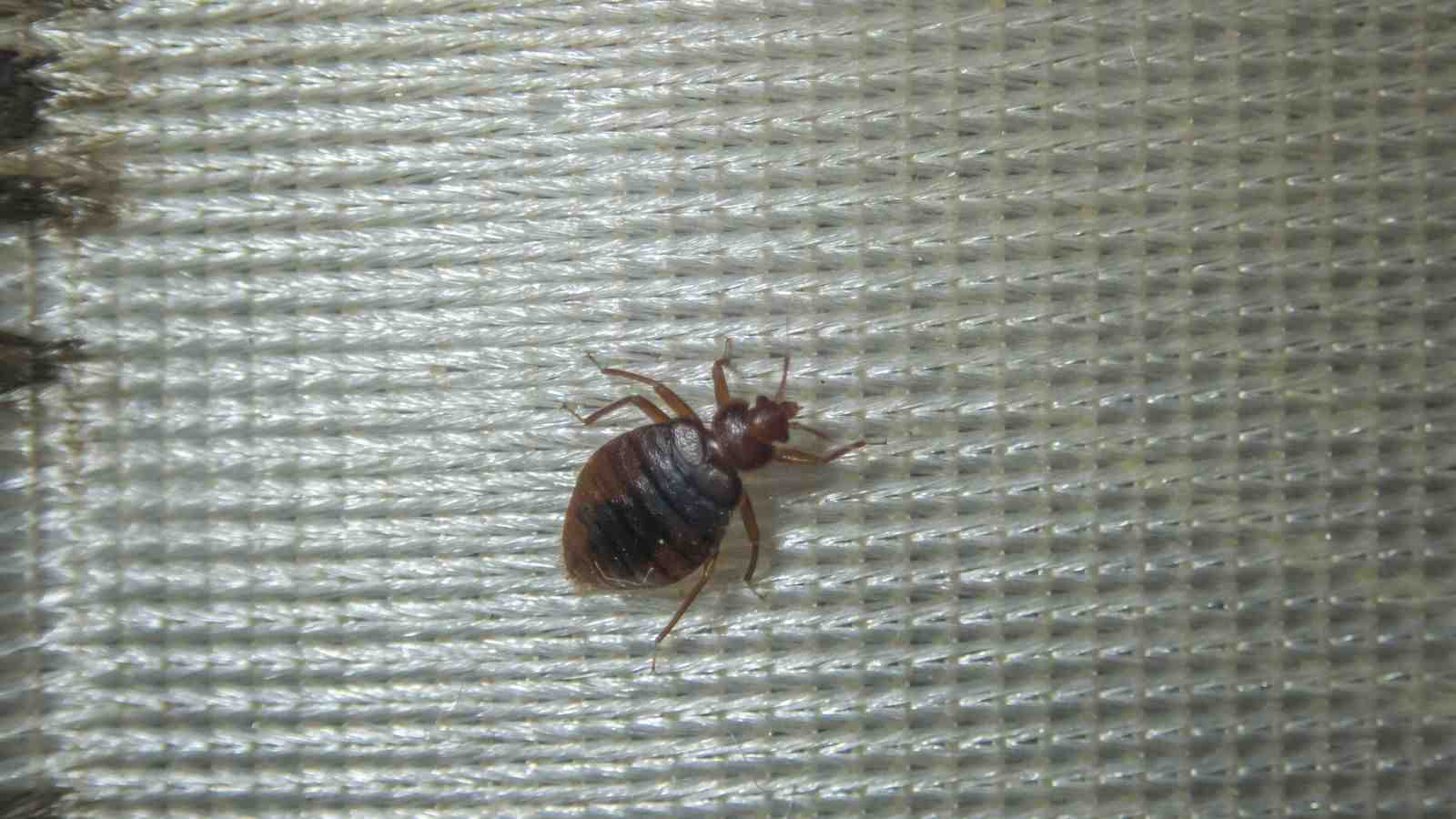Home>Furniture>Bedroom Furniture>How To Kill A Bed Bug
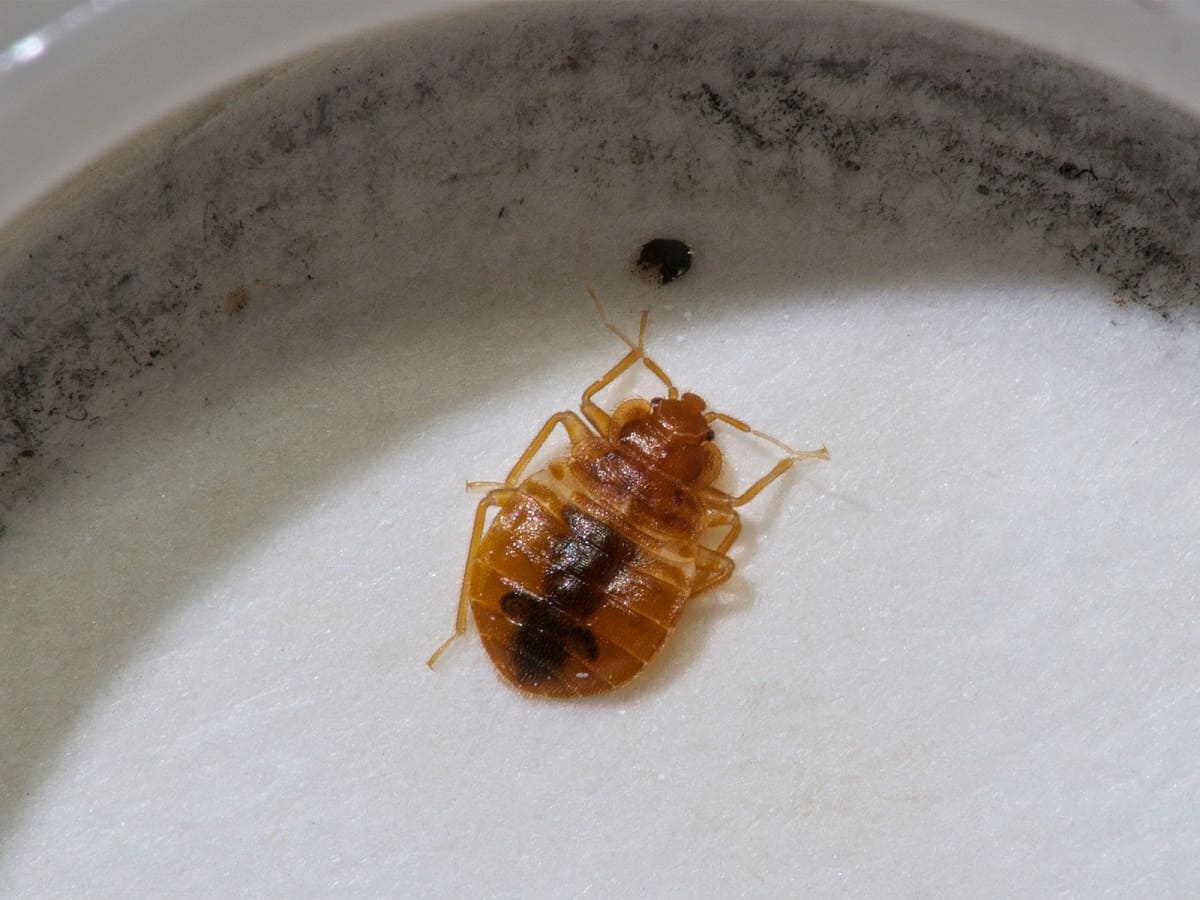

Bedroom Furniture
How To Kill A Bed Bug
Modified: October 21, 2024
Learn effective ways to eliminate bed bugs from your bedroom furniture. Find expert tips and tricks to get rid of these pests for good.
(Many of the links in this article redirect to a specific reviewed product. Your purchase of these products through affiliate links helps to generate commission for Storables.com, at no extra cost. Learn more)
Introduction
Welcome to our comprehensive guide on dealing with the pesky and persistent creatures known as bed bugs. These tiny insects have become a nightmare for homeowners around the world, as they infest mattresses, furniture, and even clothing, causing discomfort and sleepless nights. In this article, we will delve into the world of bed bugs, exploring their characteristics, signs of infestation, and most importantly, how to effectively get rid of them.
Bed bugs are small, wingless insects that feed on the blood of humans and warm-blooded animals. They are oval-shaped and brownish in color, making them quite adept at hiding in cracks and crevices. These nocturnal pests emerge from their hiding spots at night to feed on unsuspecting victims, leaving behind itchy red marks and an overwhelming sense of dread.
One of the biggest challenges with bed bugs is their ability to reproduce rapidly. A single female bed bug can lay hundreds of eggs in her lifetime, quickly turning a minor infestation into a full-blown problem. These eggs are tiny and difficult to spot, making it crucial to address any signs of an infestation as soon as possible.
The first step in dealing with a bed bug infestation is to understand the signs and symptoms. There are several telltale signs that can indicate the presence of bed bugs. These include small blood stains on sheets, rusty or dark spots on mattresses or furniture, and a distinctive sweet, musty odor. Additionally, bites that appear in a row or cluster on the skin, often accompanied by itching and swelling, can be a clear indication of bed bug activity.
To prevent a bed bug infestation in your home, it’s essential to take precautionary measures. This includes regular cleaning and vacuuming of your mattress and furniture, as well as sealing cracks and crevices where these pests can hide. It’s also important to be cautious when purchasing second-hand furniture or clothing, as bed bugs can hitch a ride and quickly infiltrate your home.
In the following sections, we will explore various methods to identify, locate, and kill bed bugs. We will discuss both natural remedies and chemical treatments, giving you a range of options to choose from, depending on your specific situation. We will also discuss the option of hiring professional exterminators to tackle severe infestations that cannot be easily eradicated through DIY methods.
Add the content of each section accordingly, always keeping in mind the importance of providing useful and valuable information to the readers. We hope that this guide will equip you with the knowledge and tools to effectively eliminate bed bugs from your home and enjoy restful nights once again.
Key Takeaways:
- Don’t let bed bugs disrupt your life – take proactive steps to detect, treat, and prevent infestations. Use natural remedies, chemical treatments, or professional help for effective eradication.
- Address bed bug bites and health impacts with self-care, medical attention, and psychological support. Protect sleeping areas and manage allergies for overall well-being.
Read more: How To Kill Bed Bugs On A Mattress
Understanding Bed Bugs
Before we dive into the process of getting rid of bed bugs, it’s important to have a solid understanding of these elusive creatures. Bed bugs, scientifically known as Cimex lectularius, are parasitic insects that primarily feed on the blood of humans and animals. They are attracted to warm temperatures and carbon dioxide, making our homes a prime target for their infestation.
Bed bugs have been a nuisance to humans for thousands of years, and while they were nearly eradicated in the mid-20th century, they have made a resurgence in recent decades. This can be attributed to increased international travel, reduced use of certain insecticides, and the development of pesticide resistance among bed bug populations.
These small, flat insects are usually reddish-brown in color, with a flattened oval body that allows them to easily hide in crevices and cracks. They are about the size of an apple seed in their adult stage, but can be much smaller in their nymph stages, making them difficult to spot with the naked eye.
Bed bugs are primarily nocturnal, which means they are most active during the night when their hosts are asleep. They have mouthparts specially adapted for piercing the skin and sucking blood, and they inject saliva into their victims to prevent blood clotting. This saliva contains an anesthetic compound, which is why most people don’t feel the bites until after they have occurred.
Contrary to popular belief, bed bugs are not indicators of poor sanitation or unclean living conditions. They can infest even the cleanest of homes, hotels, and apartments. They are excellent hitchhikers and can easily travel on luggage, clothing, and furniture, allowing them to spread from one location to another quickly.
One of the challenges in detecting bed bug infestations is their ability to hide in various locations. While they are commonly found in and around beds, including mattress seams, box springs, and headboards, they can also infest other furniture, electrical outlets, and even behind wallpaper. This is why bed bug infestations can be challenging to completely eliminate without a comprehensive approach.
Understanding the behavior and biology of bed bugs is crucial to effectively eradicating them from your home. By knowing their habits and vulnerabilities, you can develop a targeted approach to eliminate them and prevent future infestations.
In the next sections, we will discuss the signs of bed bug infestation, the preventive measures you can take, and the various methods for identifying and locating these pesky insects. Let’s dive deeper into the world of bed bugs and arm ourselves with the knowledge needed to combat their presence effectively.
Signs of Bed Bug Infestation
Recognizing the signs of a bed bug infestation is crucial to addressing the problem early on. By identifying these signs promptly, you can prevent the infestation from spreading and causing further discomfort. Here are some common signs to look out for:
- Bites and Skin Reactions: One of the most common signs of bed bugs is waking up to itchy, swollen bites on your body. Bed bug bites typically appear in a clustered or linear pattern and can be found on exposed skin areas like the arms, legs, neck, or face. However, not everyone reacts to bed bug bites, so it’s possible to have an infestation without visible bite marks.
- Blood Stains: After feeding, bed bugs may leave behind small blood stains on your sheets, pillowcases, or clothing. These blood stains are often the result of accidentally crushing a bed bug after it has engorged itself on your blood.
- Dark Spots and Stains: Bed bugs leave fecal matter behind, which appears as dark spots or stains on your mattress, sheets, or walls. These spots are typically small, about the size of a pinhead, and may be found in clusters or trails.
- Bed Bug Eggs and Shells: Bed bugs reproduce rapidly, and their eggs are often found in the vicinity of their hiding spots. These eggs are small, translucent, and sticky, and may be visible on bedding, furniture, or in cracks and crevices.
- Musty Odor: When bed bugs infest an area, they release a distinct odor described as musty or sweet. This odor is often detectable in severe infestations or in confined spaces where bed bugs are densely populated.
It’s important to note that while these signs indicate a high likelihood of bed bug presence, they are not definitive proof. Other pests and factors can cause similar symptoms, so it’s essential to conduct a thorough inspection to confirm the infestation.
If you suspect a bed bug infestation, inspect your sleeping areas carefully. Start by examining your mattress, paying close attention to the seams, tufts, and crevices. Check the bed frame, headboard, and nearby furniture for any signs of bed bugs or their eggs. Use a flashlight and a magnifying glass to aid in your search, as bed bugs can be quite small and easily overlooked.
In severe infestations, you may also find dead bed bugs or shed exoskeletons scattered around the infested areas. These discarded shells are a result of the bed bugs molting as they progress through different nymph stages.
Remember, bed bugs are excellent at hiding, so they can be found in various areas beyond just the bed. Inspect electrical outlets, cracks in the walls or floors, behind wallpaper, and any other potential hiding spots. Their flattened bodies allow them to squeeze into tight spaces, so be as thorough as possible during the inspection.
Being able to identify the signs of a bed bug infestation is the first step in addressing the issue. Once you have confirmed the presence of bed bugs, it’s crucial to take immediate action to prevent the infestation from spreading and causing further discomfort. In the next sections, we will discuss preventive measures as well as effective methods to eliminate bed bugs from your home.
Prevention and Precautionary Measures
Preventing a bed bug infestation is key to avoiding the hassle and frustration that comes with these pesky pests. While it’s not always possible to completely eliminate the risk, there are several precautionary measures you can take to minimize the chances of a bed bug infestation in your home. Here are some important steps to consider:
- Inspect Second-Hand Furniture and Clothing: Before bringing any used furniture or clothing into your home, thoroughly inspect them for any signs of bed bugs. Carefully examine the seams, crevices, and folds for any black spots, shed skins, or live bed bugs. If you notice any suspicious signs, it’s best to avoid the item to prevent introducing bed bugs into your living space.
- Use Protective Covers: Encase your mattress, box spring, and pillows with bed bug-proof covers. These special covers are designed to prevent bed bugs from infesting your bedding and make it easier to detect and eliminate any potential infestations. It’s important to choose covers that are specifically made to be bed bug-proof, as regular mattress protectors may not be effective in preventing bed bug infestations.
- Maintain Cleanliness: Regular cleaning and decluttering can help reduce the likelihood of bed bugs finding hiding spots in your home. Vacuum your carpets, rugs, and upholstery frequently, paying close attention to seams, crevices, and areas where bed bugs may congregate. Dispose of the vacuum bag in a sealed plastic bag outside of your living area to prevent any potential bed bugs from re-infesting your home.
- Be Cautious When Traveling: Bed bugs are notorious hitchhikers, so it’s important to take precautions when traveling. Inspect hotel rooms thoroughly before settling in. Check the mattress, headboard, and furniture for signs of bed bugs. Avoid placing your luggage on the bed or on the floor, and instead, use luggage racks or keep your bags elevated. Upon returning home, unpack your luggage outside or in a designated area and wash your clothes in hot water if possible.
- Seal Cracks and Crevices: Seal any cracks in walls, floors, or furniture, as these can serve as potential hiding spots for bed bugs. Use caulk to seal gaps around baseboards, pipes, and electrical outlets. Pay attention to any loose or peeling wallpaper, as bed bugs can often hide behind it. By eliminating their hiding spots, you make it more difficult for bed bugs to establish an infestation in your home.
- Use Essential Oils: Certain essential oils, such as lavender, tea tree, and peppermint, are believed to repel bed bugs. Dilute these oils with water and spray them around your mattress, bedding, and other areas prone to infestation. While essential oils may not completely eliminate bed bugs, they can act as a deterrent and help prevent their spread.
- Be Vigilant: Regularly monitor your sleeping areas and other potential bed bug hotspots for any signs of infestation. Prompt detection is crucial in addressing the issue early on and preventing the infestation from worsening.
While these preventive measures can significantly reduce the risk of a bed bug infestation, it’s important to remember that no method is foolproof. Bed bugs are resilient creatures that can find their way into your home despite your best efforts. If you do find yourself facing a bed bug infestation, don’t panic. In the next sections, we will explore various methods to identify, locate, and effectively eliminate bed bugs, both through natural remedies and chemical treatments. Stay tuned!
Identifying and Locating Bed Bugs
Identifying and locating bed bugs is crucial in order to effectively eliminate them from your home. These elusive insects can be difficult to spot, but with careful inspection and knowledge of their hiding spots, you can increase your chances of detection. Here are some key steps to help you identify and locate bed bugs:
- Visual Inspection: Start by visually inspecting your sleeping areas, including your mattress, box spring, and bedding. Look for any signs of bed bugs, such as live bugs, shed exoskeletons, or dark spots (fecal matter) on the mattress or sheets. Use a flashlight and a magnifying glass to aid in your search, as bed bugs can be quite small and easily blend in with the surroundings.
- Check Crevices and Cracks: Bed bugs are adept at hiding in tiny cracks and crevices, so it’s important to thoroughly inspect all potential hiding spots. Pay close attention to seams, tufts, and piping on your mattress and box spring. Look for any cracks or gaps in the headboard, bed frame, and nearby furniture. Bed bugs may also hide behind loose wallpaper, electrical outlets, or baseboards.
- Search for Eggs: Bed bugs reproduce rapidly, so it’s important to look for their eggs as well. These tiny, pearl-white eggs are usually found in clusters and are often attached to surfaces with a sticky substance. Check the seams and folds of your mattress, as well as any cracks or crevices where bed bugs may hide.
- Use Bed Bug Interceptors: Bed bug interceptors are devices that can be placed underneath the legs of your bed or furniture to trap any bed bugs trying to crawl up onto the sleeping surface. These interceptors are typically made of plastic or metal and have a rough inner surface that bed bugs struggle to climb. By using bed bug interceptors, you can determine if your infestation is localized to certain areas and monitor the effectiveness of your treatment.
- Employ a Bed Bug Dog: Bed bug detection dogs are trained to sniff out the presence of bed bugs. These specially trained dogs have a high success rate in identifying bed bug infestations, even in hard-to-reach areas. If you suspect a severe infestation or are having trouble locating the source of the problem, hiring a certified bed bug dog handler can be an effective option.
- Set Traps: You can set up sticky traps or glue boards around your bed or infested areas to trap any wandering bed bugs. These traps are designed to entice the bed bugs with their scent or heat, causing them to become stuck. While traps alone may not eliminate the infestation, they can help monitor and control the population.
Remember, bed bugs are excellent at hiding, and a thorough inspection is necessary to locate all potential infestation areas. If you’re having difficulty locating and eliminating bed bugs on your own, it may be necessary to seek professional help. In the next sections, we will discuss both natural and chemical treatments for bed bug infestations, as well as the option of hiring professional exterminators. Stay tuned for more information on effectively getting rid of these persistent pests!
Read more: What Temperature Kills Bed Bugs
How to Kill Bed Bugs
When it comes to getting rid of bed bugs, the key is to adopt a comprehensive approach that targets both the adult bugs and their eggs. While it may take time and effort, following these steps can help you effectively kill bed bugs and eliminate their infestation:
- Declutter and Clean: Begin by decluttering your home, especially the areas that have been infested. Remove any unnecessary items, such as piles of clothes, magazines, or clutter around your sleeping areas. Vacuum the infested areas thoroughly to remove any bed bugs, eggs, and other debris. Vacuuming not only physically removes the bugs but also disrupts their habitats and decreases their population.
- Wash and Dry: Wash all bedding, clothing, and fabrics in hot water (at least 120°F or 49°C) to kill bed bugs and their eggs. Use a dryer on high heat for at least 30 minutes to ensure that all stages of bed bugs are eliminated. Avoid using dryer sheets or fabric softeners, as they can reduce the heat effectiveness.
- Freeze Items: Items that cannot be laundered can be placed in sealed plastic bags and frozen for several days. Bed bugs are highly sensitive to extreme temperatures, and freezing can kill both the bugs and their eggs. Ensure that the freezer temperature reaches below 0°F (-18°C) to be effective.
- Steam Treatment: Steam treatment is an effective method for killing bed bugs on surfaces, such as mattresses, furniture, and carpeting. Using a steamer with a high temperature setting, steam all crevices, seams, and cracks where bed bugs may be hiding. The heat from the steam will kill the bugs and their eggs.
- Encase Mattresses and Box Springs: Once your mattress and box spring have been thoroughly cleaned, encase them with bed bug-proof covers. These covers not only help prevent bed bugs from infesting your bedding again but also make it easier to detect and eliminate any remaining bugs.
- Natural Remedies: There are several natural remedies that can help kill bed bugs. These include tea tree oil, lavender oil, and diatomaceous earth (DE). Tea tree and lavender oils have insecticidal properties that can directly kill bed bugs, while DE is a fine powder that dehydrates the bugs, causing their eventual demise. Sprinkle DE in infested areas, focusing on cracks and crevices where bed bugs are likely hiding.
- Chemical Treatments: If the infestation persists, you may consider using chemical treatments. There are various insecticides available specifically designed to kill bed bugs. Always follow the instructions carefully and use products registered for use against bed bugs. Keep in mind that repeated treatments may be necessary to eliminate all stages of the infestation.
It’s important to note that DIY methods may not be sufficient for severe infestations or if you are unable to locate all the hiding spots. In such cases, it may be necessary to seek professional help from experienced pest control companies. They have the expertise, tools, and knowledge to effectively treat and eliminate bed bug infestations.
Remember to follow safety precautions when using any chemical treatments or pesticides, and consider consulting with professionals to ensure the appropriate use and application techniques.
Eradicating bed bugs can be a challenging and time-consuming process, but by following these steps diligently, you can significantly reduce their population and create a healthier living environment. Stay persistent, keep monitoring for any signs of re-infestation, and maintain proper hygiene and cleanliness to prevent future infestations.
Vacuum and steam clean your mattress, furniture, and carpet regularly to kill bed bugs and their eggs. Dispose of the vacuum bag in a sealed plastic bag.
Natural Remedies for Killing Bed Bugs
For those who prefer to use natural methods to combat bed bug infestations, there are several effective remedies available. These natural solutions not only help kill bed bugs but also minimize the use of potentially harmful chemicals in your living environment. Here are some natural remedies to consider:
- Heat Treatment: Bed bugs are sensitive to high temperatures, so using heat treatment can be an effective way to kill them. Wash infested bedding, clothing, and fabrics at a high temperature setting, and then dry them on the hottest setting. You can also use a steam cleaner to treat items that cannot be washed, such as mattresses, furniture, and baseboards. Ensure that the heat is applied thoroughly to reach all potential hiding spots.
- Essential Oils: Certain essential oils are known for their insect-repellent properties and can be effective in killing bed bugs. Tea tree oil, lavender oil, and peppermint oil are commonly used for this purpose. Mix a few drops of the chosen oil with water and spray it on infested areas. The strong smells of these oils can suffocate and repel bed bugs, ultimately leading to their demise. However, it’s important to note that essential oils may not eliminate the infestation entirely and should be used in conjunction with other methods.
- Diatomaceous Earth (DE): DE is a natural, fine powder made from fossilized remains of diatoms. It is harmless to humans and pets but deadly to bed bugs. Sprinkle DE in areas where bed bugs are likely to hide, such as mattress seams, cracks, and crevices. As bed bugs walk over the DE, it damages their exoskeletons, leading to dehydration and eventual death. Be sure to use food-grade DE and follow the instructions on application and safety precautions.
- Cold Treatment: While heat is effective, extreme cold can also kill bed bugs. If possible, place infested items in a sealed plastic bag and leave them in a freezer at or below 0°F (-18°C) for several days. This freezing temperature will kill the bed bugs and their eggs. However, note that this method may not be practical for larger items or severe infestations.
- Vacuuming: Regular vacuuming is an essential step in combating bed bugs. Vacuuming not only removes bed bugs, nymphs, and eggs but also disrupts their habitats and reduces their population. Use a vacuum cleaner with a high-efficiency particulate air (HEPA) filter to ensure that captured bed bugs are not released back into the air. Empty the vacuum contents into a sealed plastic bag and dispose of it outside your living area.
- Washing with Hot Water: Since bed bugs cannot survive in high temperatures, washing infested items in hot water is an effective natural remedy. Wash bedding, clothing, and fabrics at a temperature of at least 120°F (49°C) and dry them on a high heat setting for at least 30 minutes. This will kill both the bugs and their eggs, helping to eliminate the infestation.
While these natural remedies can help control and reduce bed bug populations, it’s important to note that they may not completely eradicate a severe infestation. In such cases, it may be necessary to combine natural methods with chemical treatments or seek assistance from professional exterminators.
When using any natural remedies, always perform a spot test in a small, inconspicuous area to ensure that it does not cause any damage or discoloration. Additionally, be patient and persistent with the treatment process, as it may take time to achieve the desired results.
By implementing these natural remedies and adopting preventive measures, you can successfully combat bed bug infestations while minimizing your exposure to chemicals. Remember to continue monitoring and maintaining cleanliness to prevent re-infestation and create a comfortable living environment.
Chemical Treatments for Bed Bug Infestation
Chemical treatments are often a highly effective method for eliminating bed bug infestations, especially in cases of severe or widespread infestations. These treatments involve the use of insecticides specifically formulated to target and kill bed bugs. It’s important to note that when using chemical treatments, it’s crucial to follow the product instructions carefully and take necessary safety precautions. Here are some commonly used chemical treatments for bed bug infestations:
- Insecticide Sprays: Bed bug-specific insecticide sprays are commonly used to treat infested areas. Look for insecticides that are labeled for use against bed bugs and follow the instructions provided by the manufacturer. Spray infested areas, including mattress seams, cracks, crevices, and furniture, with a focus on areas where bed bugs are likely to hide. It’s important to note that repeated applications may be necessary to target bed bugs in different stages of their life cycle.
- Insecticide Dusts: Insecticide dusts, such as diatomaceous earth (DE) or silica gel, are fine powders that can be applied to cracks, crevices, and other hiding spots. These dusts work by physically damaging the bed bugs’ exoskeleton and dehydrating them. Apply the dusts in thin, even layers using a duster or an applicator, ensuring that the dust comes into contact with the bugs. Avoid over-applying, as excessive dust can be easily dispersed into the air.
- Residual Insecticides: Residual insecticides are long-lasting products that provide ongoing protection against bed bugs. These types of insecticides can be applied to surfaces and create a barrier, killing bed bugs as they come into contact with the treated area. Follow the product instructions for specific application methods and recommended surfaces. It’s important to note that residual insecticides should only be used in areas where they will not come into direct contact with humans or pets.
- Professional Extermination: In severe infestations or if chemical treatments have not been successful, it’s advisable to seek professional help from licensed pest control companies. Professional exterminators have access to a range of potent insecticides and specialized equipment to effectively treat bed bug infestations. They can assess the extent of the infestation, develop a customized treatment plan, and ensure the safety and effectiveness of the treatment.
- Follow-up Treatments: Bed bug infestations often require multiple treatments to fully eradicate the pests. This is because insecticides may not effectively kill bed bug eggs, and new bugs can hatch from these eggs after initial treatments. Follow the product instructions or consult with a professional to determine the appropriate timing for follow-up treatments, usually about two to three weeks after the initial treatment.
When using chemical treatments, it’s important to prioritize safety. Keep in mind the following precautions:
- Read and follow the product labels and instructions carefully.
- Use insecticides in well-ventilated areas and wear appropriate protective gear, such as gloves and masks.
- Keep children and pets away from treated areas until the insecticides have dried completely.
- Consider using lower-toxicity options, especially in areas where there are vulnerable individuals, such as children, pregnant women, or those with respiratory conditions.
- If unsure about the proper use of chemicals or have concerns about safety, consult with a professional pest control company.
Chemical treatments can be effective in eliminating bed bugs, but they should be used judiciously and in conjunction with other preventive measures to achieve the best results. Regular monitoring, routine cleaning, and maintaining good hygiene practices are crucial in preventing future infestations.
Remember, it’s essential to choose insecticides specifically labeled for bed bug control and adhere to all safety guidelines to mitigate the risks associated with chemical treatments.
Hiring Professional Exterminators
Dealing with a bed bug infestation can be a challenging and overwhelming task, especially if the infestation has become severe or difficult to control. In such cases, hiring professional exterminators can be a wise decision. Here’s why seeking professional help can be beneficial:
- Expertise and Experience: Professional exterminators have specialized knowledge and training in dealing with bed bug infestations. They understand the behavior and biology of bed bugs, allowing them to develop effective treatment strategies tailored to your specific situation. Their experience in identifying hiding spots, utilizing appropriate treatments, and implementing preventative measures can significantly improve the chances of successful eradication.
- Advanced Treatment Methods: Professional exterminators have access to a range of professional-grade insecticides, tools, and equipment that are not available to the general public. They are abreast of the latest developments in bed bug control and can employ advanced treatment methods that effectively target the infestation, including heat treatments, fumigation, and targeted insecticide applications.
- Customized Treatment Plans: Every bed bug infestation is unique, requiring a tailored approach for effective control. Professional exterminators conduct thorough inspections of your property to assess the extent of the infestation and identify potential hiding spots. They then develop customized treatment plans that target the infestation at all stages of the bed bug life cycle, ensuring comprehensive eradication.
- Efficient and Timely Service: Professional exterminators are equipped to handle infestations of any size, enabling them to efficiently eliminate bed bugs in a timely manner. Their expertise and access to professional-grade products and equipment allow for more effective treatment, reducing the time and effort required to resolve the infestation. This is especially important for individuals with busy schedules or those dealing with severe infestations.
- Safe and Controlled Application: Professional exterminators are trained in the safe and controlled application of insecticides and treatments. They follow strict guidelines and regulations to ensure the proper handling and disposal of chemicals, minimizing risks to human health and the environment. Professional exterminators can effectively manage the use of chemicals, reducing potential exposure for you and your family.
- Follow-up and Guarantee: Professional exterminators typically provide follow-up visits to ensure that the treatment has been successful and address any lingering issues. They may offer warranties or guarantees on their services, giving you peace of mind that if the infestation persists or returns within a specified period, they will return and continue the treatment at no additional cost.
When hiring professional exterminators, it’s important to choose a reputable and licensed company. Consider seeking recommendations from friends, family, or trusted sources, and research different companies to find one with a proven track record in bed bug control.
During the initial consultation, ask questions about their treatment methods, success rates, guarantees, and pricing. Ensure they are knowledgeable about bed bug biology and have experience in handling similar infestations.
Remember, professional extermination is an investment in effectively eliminating bed bugs from your home. It not only saves you time and effort but also provides you with the expertise and resources necessary to tackle even the most stubborn infestations.
By hiring professional exterminators, you can have confidence that you are taking the most effective steps towards eradicating bed bugs and creating a safe, pest-free environment for you and your family.
Read more: How To Kill Bed Bugs Instantly
Dealing with Bed Bug Bites and Impacts on Health
Bed bug bites can cause significant discomfort and irritation. While they are not known to transmit diseases, they can have a negative impact on your physical and mental well-being. Here are some important considerations for dealing with bed bug bites and their impacts on health:
- Treating Bed Bug Bites: If you are experiencing bed bug bites, there are several measures you can take to alleviate the symptoms and promote healing. Wash the affected areas with mild soap and water to cleanse the bites. Applying a cold compress or ice pack can help reduce swelling and itchiness. Over-the-counter hydrocortisone creams or antihistamines may provide relief from itching. Avoid scratching the bites, as it can lead to infection or worsening of the symptoms.
- Seeking Medical Attention: In most cases, bed bug bites can be managed at home with self-care measures. However, if you develop severe allergic reactions or secondary infections, it’s advisable to seek medical attention. Signs of a severe reaction may include difficulty breathing, chest tightness, dizziness, or swollen tongue or throat. Additionally, if you experience intense itching that disrupts sleep or significantly impacts your daily life, consult a healthcare professional.
- Addressing Psychological Impact: Dealing with a bed bug infestation can take a toll on your mental well-being. The fear of being bitten, the anxiety of the infestation spreading, and the potential social stigma associated with bed bugs can cause emotional distress. It’s important to seek emotional support from friends, family, or support groups. Consider talking to a mental health professional if the psychological impact becomes overwhelming.
- Preventing Secondary Infections: Bed bug bites can create openings in the skin, increasing the risk of infection. Keep the bite areas clean and apply an antiseptic ointment to reduce the likelihood of infection. If you notice signs of infection, such as increased redness, warmth, swelling, or pus, consult a healthcare professional for appropriate treatment.
- Protecting Your Sleeping Areas: While you are addressing the bed bug infestation, it’s important to protect your sleeping areas and prevent further bites. Use bed bug-proof mattress and pillow encasements to prevent bed bugs from accessing your bedding. Keep your bed away from walls and other furniture, as bed bugs can crawl onto your bed from neighboring areas. Regularly clean and vacuum your sleeping areas to remove any lingering bed bugs.
- Addressing Allergies and Asthma: Some individuals may develop allergies or asthma symptoms in response to bed bug infestations. If you have known allergies or respiratory conditions, it’s important to take extra precautions. Use air purifiers with HEPA filters to improve air quality, regularly clean and vacuum your home to reduce allergens, and consult your healthcare professional for appropriate management of your condition.
Remember, addressing the impacts of bed bug bites on health requires a multi-faceted approach. Combining self-care measures, seeking medical attention when necessary, and addressing the psychological impact can help you cope with the challenges of dealing with bed bug bites.
It’s important to note that eliminating the underlying bed bug infestation is crucial for long-term relief. By following appropriate treatment methods, seeking professional help if needed, and implementing preventive measures, you can effectively eliminate bed bugs and reduce the likelihood of further bites and health impacts.
Take care of your physical and mental well-being while addressing the infestation, and don’t hesitate to reach out for professional assistance or medical advice when needed. With proper care and diligence, you can overcome the discomfort and health impacts of bed bug bites.
Conclusion
Dealing with a bed bug infestation can be a frustrating and challenging experience. However, with the right knowledge, strategies, and perseverance, you can effectively eliminate these pests and regain control of your living spaces. Throughout this comprehensive guide, we have explored various aspects of bed bugs, including their characteristics, signs of infestation, prevention methods, and treatment options.
Understanding the behavior and biology of bed bugs is crucial in effectively combating them. Recognizing the signs of a bed bug infestation, such as bites, blood stains, dark spots, and musty odors, allows for early detection and prompt action. Implementing preventive measures, such as inspecting second-hand items, using protective covers, and maintaining cleanliness, can help minimize the risk of infestations.
In the battle against bed bugs, a multi-faceted approach is necessary. We discussed natural remedies, such as heat treatment, essential oils, and diatomaceous earth, which can be effective in killing bed bugs and reducing their population. Chemical treatments, when used according to instructions and with safety precautions, are also viable options for eradicating bed bugs. In more severe cases, seeking professional exterminators can provide the expertise, advanced treatments, and guarantees needed to address complex infestations.
When dealing with bed bug bites, it’s important to practice proper care and seek medical attention when necessary. Treating the bites, preventing secondary infections, and addressing the psychological impact are crucial aspects of managing the consequences of bed bug infestations. Additionally, protecting sleeping areas and addressing allergies or respiratory conditions can further contribute to your overall well-being.
In conclusion, eradicating bed bugs requires persistence, thoroughness, and a combination of prevention, treatment, and maintenance strategies. Whether you choose natural remedies, chemical treatments, or professional exterminators, always prioritize safety and follow recommended guidelines. Remember that the key to successful bed bug control lies in early detection, thorough treatment, and vigilant preventive measures.
By taking a proactive approach and staying informed, you can overcome bed bug infestations and create a safe, peaceful environment in your home. Don’t let the presence of these persistent pests disrupt your life any longer – take charge and reclaim your space!
Frequently Asked Questions about How To Kill A Bed Bug
Was this page helpful?
At Storables.com, we guarantee accurate and reliable information. Our content, validated by Expert Board Contributors, is crafted following stringent Editorial Policies. We're committed to providing you with well-researched, expert-backed insights for all your informational needs.
